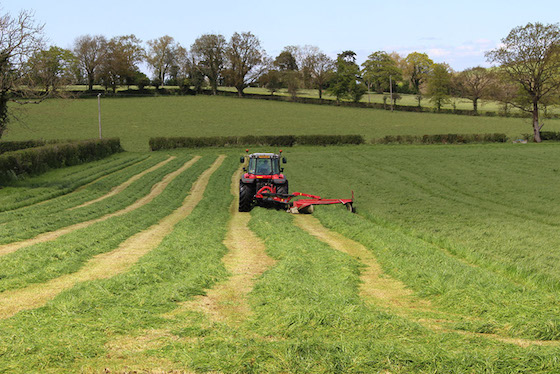Livestock farmers urged to make full use of autumn grass growth
21st September 2018
With silage clamps short of forage across the country, livestock farmers must use the next few weeks wisely to make up for lost ground, says independent grassland consultant Dr
With silage clamps short of forage across the country, livestock farmers must use the next few weeks wisely to make up for lost ground, says independent grassland consultant Dr George Fisher.
While reseeding, moving to multicut systems and investing in soil fertility are good ways to boost grassland performance long-term, producers should plan short-term measures to boost forage reserves as much as possible, he says.
“First off do a feed budget between now and next spring. What forage stocks do you have and what do you need? Plan to use cutting and grazing to get what you can from home-grown forage and use your contacts to buy-in the rest.
“Coming out of the drought it’s a good plan is to cut what you have as soon you can and bale it as this will remove the seed heads that have been produced in abundance due to drought stress.”
While there is a case for applying additional N fertiliser, the best plan is to first leave the nutrients you have already applied to do their work, he says.
“If you’ve used ammonium nitrate (AN) it will still be available to plants but those who applied urea may have lost the majority of the available N by now so this may need a top up with AN.
“Keep your nerve after this recovery cut and then go for a proper silage cut in 4 – 5 weeks time and then another one after the same period if you can, even if this is late October/early November.”
While NVZ rules say no manufactured fertiliser N should be applied to grassland after September 15th, this might be allowed if there are exceptional circumstances, he adds.
“You’ll need to be guided and have your proposal justified by a FACTS qualified adviser, but there will definitely be a strong case for applying autumn fertiliser this year in order to build up essential forage stocks.”
Mark Garrett of CF Fertilisers says producers considering this should proceed with care.
“If you’re considering doing anything outside of the regulations you should always talk with the Environment Agency first, so pick up the ‘phone and explain the situation.
“Of course, you should be particularly careful in fields where a late N application might potentially produce a nitrogen loss, such as those close to water courses and boreholes or where soils are on sloping ground.
“Adding Sulphur should help improve N uptake and use, giving better yield and quality, so go for a with-Sulphur fertiliser option.”
All told, there are several possible directions to take to build forage stocks, but the key is not to waste the opportunity the next few weeks present, Mark Garrett urges.
“The safest bet for many is to manage nutrient inputs, grazing and silage cuts carefully to harvest as much as grass as possible whilst being mindful of the limitations and pitfalls possible in the autumn.
“Longer term, many producers will have to take a serious look at how they can adjust their management to make sure their production of home-grown feeds is as risk free as possible.
“You can’t avoid the fact that those using nutrients properly, reseeding regularly and taking more cuts have fared better this year than those who have not invested in their grassland in recent years.”
Replicated trials supported by CF Fertilisers and conducted by SRUC in Aberdeen, show the benefits of planning N and S fertiliser inputs, even in a drought year.
Results suggest farmers can apply up to 50kg N/ha (40 units/acre) at this time of year, says SRUC grassland specialist Dr. David Lawson.
“Our 2018 trial showed a 1.5t DM/ha (600kg DM/acre) advantage to using the recommended rates of N and S at second cut, compared to half rates, even in the drought period.
“This level of response in autumn grass is worth 400kg concentrate energy/acre, that’s around £90/acre (£250/ha). So, a £20/acre (£50/ha) investment in fertiliser to get this effect is well worth it and the response is in forage, which we are all short of.”

